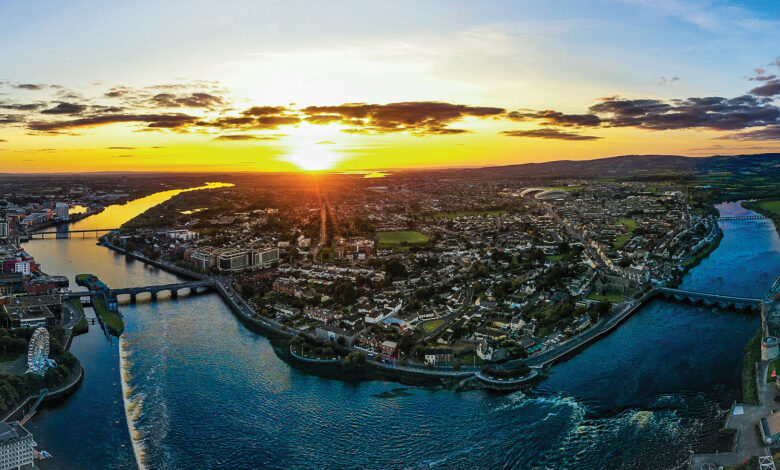Limerick City and County Council: Pioneering digital solutions for a smarter future

Limerick City and County Council has emerged as a trailblazer in digital transformation, propelling the region into a new era of innovation and connectivity.
Over the past decade, the council has embraced cutting-edge digital solutions, setting the stage for a resilient and forward-thinking city. This article delves into Limerick’s ambitious digital journey, highlighting key initiatives, challenges, and future goals.
A transformative journey begins
The amalgamation of Limerick City Council and Limerick County Council marked the beginning of a transformative journey. Under the leadership of the Chief Executive, a comprehensive change management program was launched to challenge the status quo of local authority operations.
This initiative focused on consolidating customer service operations and implementing a unified digital tool for all council interactions. A pivotal moment came with the introduction of a customer relationship management (CRM) system, which established the foundation for continued innovation.
Overcoming economic challenges
In the aftermath of the 2008 global economic crisis, Limerick faced significant challenges. The council, alongside local industry leaders, spearheaded efforts to rejuvenate the economy. Today, Limerick enjoys close to full employment across a variety of diverse sectors, has a thriving economy, and a vibrant housing market. With 30,000 students graduating annually from its universities and several large-scale projects underway, Limerick is poised for sustained growth, driven by innovation.
Post-Covid digital transformation
Post-Covid, Limerick City and County Council has embarked on an ambitious digital transformation journey, building on their solid foundations. The focus is on embracing modern technology solutions to meet European and National digital objectives, as outlined in the EU’s Digital Decade plan, Harnessing Digital – The Digital Ireland Framework, and the Local Government Management Agency’s Digital and ICT Strategy. In Limerick, we have a tech-forward mindset and an entrepreneurial spirit that seeks to change the mould of how we are perceived and importantly, how we operate.
From data-aware to data-driven
Like all local authorities, we are an information-heavy organisation, and in IT terms, we are currently data-aware. Across our nearly 1,000 services, we use available data to drive service outcomes, but our goal is to transition from being data-aware to data-driven. Being data-driven involves systematically integrating data into decision-making processes and growing a culture where data is central to strategy and operations. This means putting the right data in front of the right people at the right time efficiently, ultimately allowing the organisation to become more proactive and efficient.
Building a data infrastructure
Creating enterprise-scale data and dashboard infrastructure is essential for enhancing decision-making, service delivery, and transparency. This infrastructure integrates multiple data sources, providing a comprehensive view of operations and community needs. It must be robust, scalable, cost-effective, secure, and maintainable. Upskilling the IT team is crucial to managing this sophisticated system, requiring training in cloud services, data strategy, and governance. This process is underway, bringing private sector norms and first hand experience to the table.

Service design and delivery
Digital transformations are complex, requiring harmony between people, processes, and technology. Limerick City and County Council’s focus on service design ensures that digitised processes are optimised first. Our goal is to ensure that the citizen experience can start on the phone, continue in person, and finish over email (or other digital channel). This will also cater for the digitally excluded who should expect that same efficient delivery of their service.
At the core of this is a future lens that will position us for future omnichannel case management, virtual chatbots, and other technological advancements like AI. This upgrade will enhance our cybersecurity posture and place us in an optimal position to develop new online services, aligning with the council’s digital goals.
Consolidating forms and workflows into centralised platforms reduces confusion and improves efficiency. For IT support, fewer systems to maintain and troubleshoot result in quicker issue resolution and less downtime.
Digitalising back office work will improve service delivery, but more importantly, it has the ability to release capacity from council staff so that they can spend more time doing more valuable work. This in turn can enhance succession planning in a highly mobile work environment, where staff frequently move. It becomes a simpler task to show the new person on the team how to press a button than explain a lot of manual steps. In this age of hyper-automation and AI, the sky is the limit in what we can achieve.
The role of a directly elected mayor
A key differentiator for Limerick is the election of a directly elected mayor (DEM) in 2024, who will possess executive powers. This pioneering role is expected to transform Limerick, elevating its status both nationally and internationally. The DEM will play a crucial role in driving digital initiatives and fostering a culture of innovation.
Looking to the future
Limerick City and County Council’s journey toward digital excellence is a testament to its commitment to innovation. By embracing enterprise-scale solutions and modernising its tech infrastructure, Limerick is setting a benchmark for other cities. The future is bright, with the council’s ongoing efforts promising to enhance the quality of life and economic prosperity for all residents.
As Limerick continues to innovate, the city stands as a beacon of what is possible through strategic digital transformation, paving the way for a smarter, more connected future.

T: +353 61 556000
E: customerservices@limerick.ie
W: Limerick.ie





